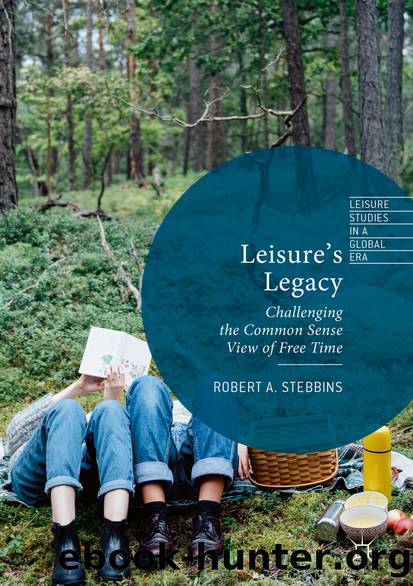Leisure’s Legacy by Robert A. Stebbins

Author:Robert A. Stebbins
Language: eng
Format: epub
Publisher: Springer International Publishing, Cham
The term “formal” in this definition refers in fact to a scale of structure and operations that, in an actual association, may be informal, semiformal, or formal. Moreover, the line separating grassroots associations from paid-staff voluntary groups—treated of in the next paragraph as volunteer organizations—is unavoidably fuzzy, distinguishing the two being primarily a matter of gradation. Both types fall under the heading of voluntary groups: “nonprofit groups of any type, whether grassroots associations or based on paid staff, and whether local, national, or international in scope” (Smith, 2000, p. ix). Formal grassroots associations include such entities as Girl Guide troops, stamp collectors’ societies, singles’ clubs, outlaw biker gangs, and college fraternities and sororities. By contrast, self-help, friendship, and book-discussion groups, for example, are often informal.
Turning to volunteer organizations, they offer leisure only to career and casual volunteers and to volunteers serving on projects. Volunteer organizations are distinguished by their reliance on paid staff, and by the fact that they are established to facilitate work for a cause or provision of a service rather than pursuit of a pastime. They nonetheless depend significantly on volunteer help to reach their objectives.
Pearce (1993, p. 15) holds that by far the largest number of volunteers work in these organizations. Yet some volunteer organizations may be staffed entirely by remunerated employees, volunteers only being engaged as unpaid members of their boards of directors. Hospitals and universities present two main examples. Many foundations can be similarly classified. Other volunteer organizations have a more even mix of paid and volunteer personnel; they include Greenpeace, Amnesty International, and the Red Cross. Finally, some have only one or two employees, with all other work being conducted by volunteers. They are, at bottom, grassroots associations that have grown complicated enough to justify paying someone to help with some of the group’s routine operations that its volunteers are unable or unwilling to carry out.
What remains, then, to be examined in this section on leisure and organization is the social movement. A social movement is a non-institutionalized set of networks, small groups, and formal organizations that has coalesced around a significant value, one inspiring members to promote or resist change with reference to it. The first question is whether participation in a social movement is a leisure activity. The answer is both yes and no, for it depends on the movement in question. Movements abound that gain members through their own volition, suggesting that the members experience no significant coercion to become involved. Some religious movements serve as examples, as do movements centered on values like physical fitness and healthy eating. Still, the latter two also include people who feel pressured by outside forces to participate, as when their physician prescribes exercise and weight loss or face an early death. Thus some social movements are composed of enthusiasts who are there for leisure reasons and other people who are compelled to be there (not leisure).
Finally, there are movements that seem to find their impetus primarily in people who feel driven to champion
Download
This site does not store any files on its server. We only index and link to content provided by other sites. Please contact the content providers to delete copyright contents if any and email us, we'll remove relevant links or contents immediately.
| Anthropology | Archaeology |
| Philosophy | Politics & Government |
| Social Sciences | Sociology |
| Women's Studies |
Cecilia; Or, Memoirs of an Heiress — Volume 1 by Fanny Burney(32068)
Cecilia; Or, Memoirs of an Heiress — Volume 3 by Fanny Burney(31463)
Cecilia; Or, Memoirs of an Heiress — Volume 2 by Fanny Burney(31413)
The Great Music City by Andrea Baker(30794)
We're Going to Need More Wine by Gabrielle Union(18641)
All the Missing Girls by Megan Miranda(14767)
Pimp by Iceberg Slim(13787)
Bombshells: Glamour Girls of a Lifetime by Sullivan Steve(13692)
Fifty Shades Freed by E L James(12923)
Talking to Strangers by Malcolm Gladwell(12887)
Norse Mythology by Gaiman Neil(12847)
For the Love of Europe by Rick Steves(11544)
Crazy Rich Asians by Kevin Kwan(8894)
Mindhunter: Inside the FBI's Elite Serial Crime Unit by John E. Douglas & Mark Olshaker(8708)
The Lost Art of Listening by Michael P. Nichols(7169)
Enlightenment Now: The Case for Reason, Science, Humanism, and Progress by Steven Pinker(6878)
The Four Agreements by Don Miguel Ruiz(6324)
Bad Blood by John Carreyrou(6283)
Weapons of Math Destruction by Cathy O'Neil(5842)
